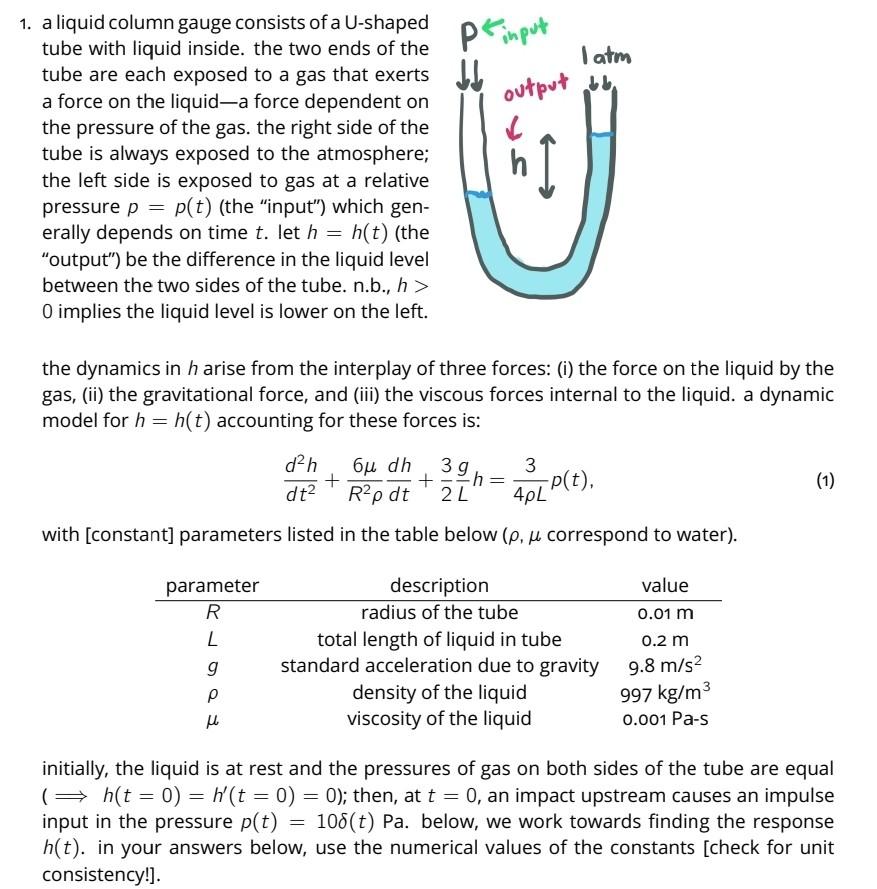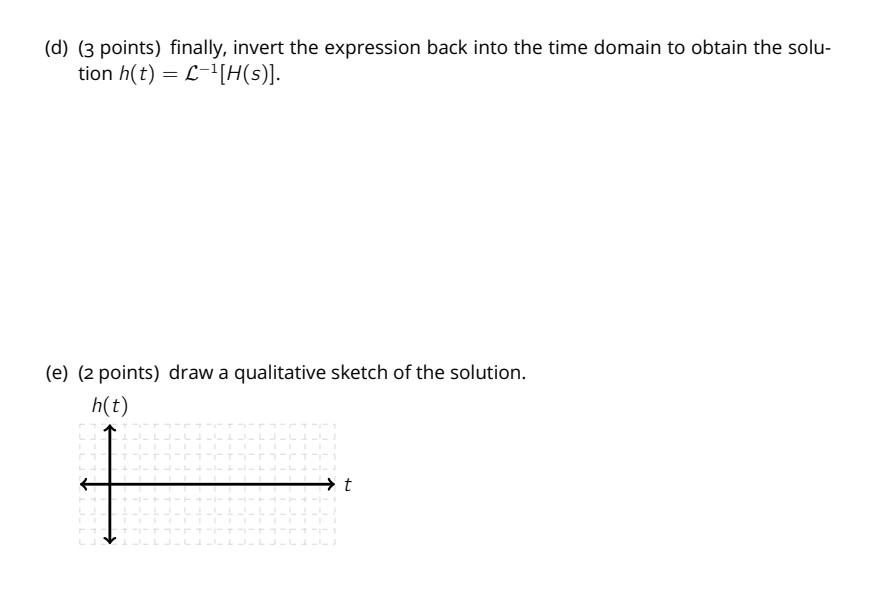Answered step by step
Verified Expert Solution
Question
1 Approved Answer
pe input latm output bb 1. a liquid column gauge consists of a U-shaped tube with liquid inside. the two ends of the tube are


pe input latm output bb 1. a liquid column gauge consists of a U-shaped tube with liquid inside. the two ends of the tube are each exposed to a gas that exerts de a a force on the liquid-a force dependent on the pressure of the gas. the right side of the tube is always exposed to the atmosphere; the left side is exposed to gas at a relative pressure p = p(t) (the "input") which gen- erally depends on time t. let h = h(t) (the "output") be the difference in the liquid level between the two sides of the tube. n.b., h> O implies the liquid level is lower on the left. the dynamics in h arise from the interplay of three forces: (i) the force on the liquid by the gas, (ii) the gravitational force, and (iii) the viscous forces internal to the liquid. a dynamic model for h=h(t) accounting for these forces is: ou dh 399 dh + + Rap dt 2L = 3 -p(t), 4pL ) (1) dt2 with [constant] parameters listed in the table below (p.u correspond to water). parameter R L g u description value radius of the tube 0.01 m total length of liquid in tube 0.2 m standard acceleration due to gravity 9.8 m/s2 density of the liquid 997 kg/m3 viscosity of the liquid 0.001 Pas initially, the liquid is at rest and the pressures of gas on both sides of the tube are equal (= h(t = 0) = h'(t = 0) = 0); then, at t = 0, an impact upstream causes an impulse input in the pressure p(t) = 108(t) Pa. below, we work towards finding the response h(t). in your answers below, use the numerical values of the constants [check for unit consistency!]. (d) (3 points) finally, invert the expression back into the time domain to obtain the solu- tion h(t) = L-'[H(s)). (e) (2 points) draw a qualitative sketch of the solution. h(t) t
Step by Step Solution
There are 3 Steps involved in it
Step: 1

Get Instant Access to Expert-Tailored Solutions
See step-by-step solutions with expert insights and AI powered tools for academic success
Step: 2

Step: 3

Ace Your Homework with AI
Get the answers you need in no time with our AI-driven, step-by-step assistance
Get Started


